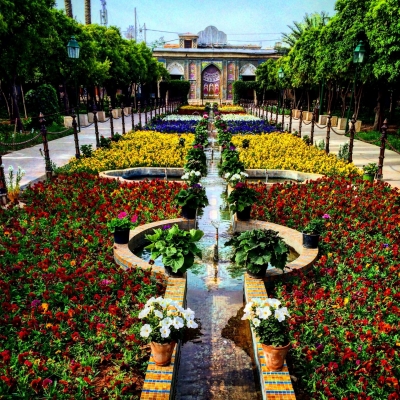
The Persian garden design evolved around the 6th Century BC during the time of Cyrus the Great, the founder of the Archaemenid Empire. It finds its roots in the idea of an earthly paradise made popular by Persian literature and is conceived to symbolize Eden and the four Zoroastrian elements of sky, earth, water and plants. Gardens following the Persian design reflect the flexibility of the Chahar Bagh, which is the originating principle of the Persian garden. Meaning ‘four gardens’, the Chahar Bagh follows a quadrilateral garden layout based on four gardens of paradise mentioned in the Qur’an. Hence, the Persian garden is always divided into four sectors with water playing an important part in the design, especially for irrigation and ornamentation.
The Persian garden design combines manmade components with nature and incorporates concepts of art, philosophy, symbolism and religion. Designed with the ability to withstand drastic climatic conditions, the Persian garden is inspired by the application of different fields of knowledge such as technology, water management and engineering, agriculture, botany and architecture.
Apart from plant or flower beds, one can find architectural elements such as buildings, walls and pavilions in the Persian garden.
Having found references in poetry, literature, music, calligraphy and carpet design, the Persian garden design has influenced the art of garden design in places as far as India and Spain.
Picture Credit : Google

